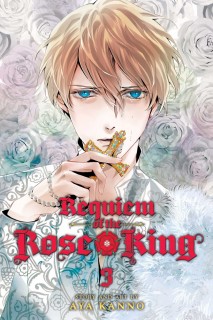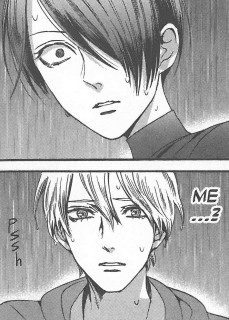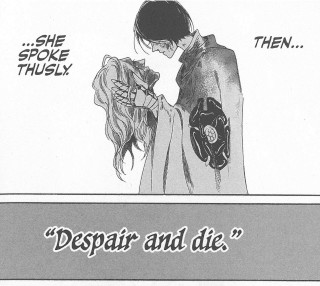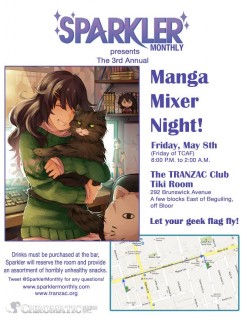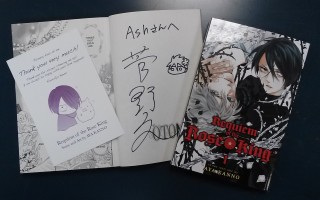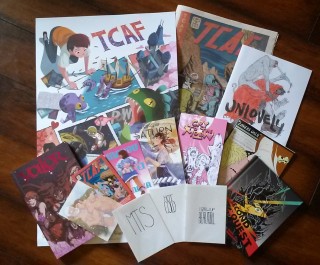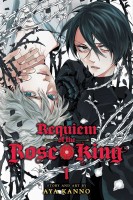My News and Reviews
Last week was pretty quiet at Experiments in Manga (like most weeks these days, really) but I did finally get around to posting October’s Bookshelf Overload for those interested in some of the cool things I picked up last month. Last week was pretty stressful for a variety of reasons so I wasn’t online much, but I did recently find out about two Japanese novels scheduled to be released in translation next year that I’m very excited about. In May be on the lookout for Minae Mizumura’s Inheritance from Mother. Only two of Mizumura’s long works have been translated so far–A True Novel which in part is a reimagining of Emily Brontë’s Wuthering Heights, and the utterly fascinating nonfiction treatise The Fall of Language in the Age of English–both of which were tremendous, so I’m really looking forward to reading more by Mizumura. And in June look for Tomoyuki Hoshino’s Me, a novel exploring themes of identity. Hoshino’s stories are frequently challenging and unsettling but I find that it’s well-worth the effort it takes to read them. Like Mizumura, currently there are only two books by Hoshino available in English–the novel Lonely Hearts Killer and the short fiction collection We, the Children of Cats which in particular left a huge impression on me–so I’m happy that there will be a third.
Quick Takes
 Cells at Work!, Volume 1 by Akane Shimizu. Sometimes the premise of a manga is so fantastically odd that I can’t help but be curious. Cells at Work, in which the cells of the human body, bacteria, and such are literally personified, is one such series. It’s also an educational manga–readers may very well learn a thing or two about microbiology and human anatomy and physiology thanks to Cells at Work (assuming they weren’t already familiar with how the body functions). Although there are recurring characters, the first volume of Cells at Work is fairly episodic, mostly focusing on the immune system’s response to injury and potential infection. Things are more exciting when the world seems like it’s about to end and a catastrophe must be averted. Bacteria are portrayed like monsters and villains out of some sort of super sentai show. White blood cells are fairly cool and laid-back, at least until they’re fighting off invaders and are completely overcome by maniacal bloodlust. Influenza causes a zombie outbreak. Cedar pollen triggers an apocalyptic allergies. Sneezes take the form of enormous missiles. Cells at Work is actually kind of ridiculous and over-the-top (with artwork to match), but it’s a great deal of fun.
Cells at Work!, Volume 1 by Akane Shimizu. Sometimes the premise of a manga is so fantastically odd that I can’t help but be curious. Cells at Work, in which the cells of the human body, bacteria, and such are literally personified, is one such series. It’s also an educational manga–readers may very well learn a thing or two about microbiology and human anatomy and physiology thanks to Cells at Work (assuming they weren’t already familiar with how the body functions). Although there are recurring characters, the first volume of Cells at Work is fairly episodic, mostly focusing on the immune system’s response to injury and potential infection. Things are more exciting when the world seems like it’s about to end and a catastrophe must be averted. Bacteria are portrayed like monsters and villains out of some sort of super sentai show. White blood cells are fairly cool and laid-back, at least until they’re fighting off invaders and are completely overcome by maniacal bloodlust. Influenza causes a zombie outbreak. Cedar pollen triggers an apocalyptic allergies. Sneezes take the form of enormous missiles. Cells at Work is actually kind of ridiculous and over-the-top (with artwork to match), but it’s a great deal of fun.
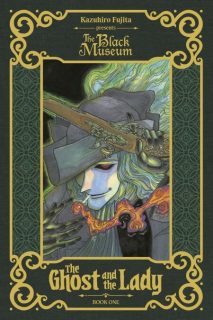 The Ghost and the Lady, Volume 1 by Kazuhiro Fujita. As far as I can tell, The Ghost and the Lady actually makes up the last two volumes of the three-volume series The Black Museum. I don’t believe Kodansha Comics has any current plans to release the rest of The Black Museum, but if it’s anywhere near as good as the first volume of The Ghost and the Lady then I hope to one day see it. The Ghost and the Lady is admittedly somewhat peculiar. Basically it’s a supernatural retelling of the life and legends surrounding Florence Nightingale. Tormented by eidolons–spectral manifestations of ill-will and malice–Florence seeks her own death, asking a ghost known as the Man in Grey to kill her. He agrees, but declares he will only take her life once she reaches the depths of despair. (Grey, who haunts a theater, has perhaps seen Shakespeare’s tragedies one too many times.) The Ghost and the Lady is intense and enthralling with both Grey and Florence precariously balanced on the edge of insanity. The series is a little difficult to describe in a way that conveys just how great it is. Honestly, I wasn’t quite sure what to expect from The Ghost and the Lady, but I loved the first volume and am looking forward to reading the second half of the story.
The Ghost and the Lady, Volume 1 by Kazuhiro Fujita. As far as I can tell, The Ghost and the Lady actually makes up the last two volumes of the three-volume series The Black Museum. I don’t believe Kodansha Comics has any current plans to release the rest of The Black Museum, but if it’s anywhere near as good as the first volume of The Ghost and the Lady then I hope to one day see it. The Ghost and the Lady is admittedly somewhat peculiar. Basically it’s a supernatural retelling of the life and legends surrounding Florence Nightingale. Tormented by eidolons–spectral manifestations of ill-will and malice–Florence seeks her own death, asking a ghost known as the Man in Grey to kill her. He agrees, but declares he will only take her life once she reaches the depths of despair. (Grey, who haunts a theater, has perhaps seen Shakespeare’s tragedies one too many times.) The Ghost and the Lady is intense and enthralling with both Grey and Florence precariously balanced on the edge of insanity. The series is a little difficult to describe in a way that conveys just how great it is. Honestly, I wasn’t quite sure what to expect from The Ghost and the Lady, but I loved the first volume and am looking forward to reading the second half of the story.
 Requiem of the Rose King, Volumes 4-5 by Aya Kanno. I continue to thoroughly enjoy Requiem of the Rose King, Kanno’s dark and sensual reimagining of Shakespeare’s plays Henry VI and Richard III and of the historical Wars of the Roses. Shakespeare took some liberties when dramatizing England’s dynastic conflicts and Kanno has as well. The most notable difference in Requiem of the Rose King is the deliberate ambiguity of Richard’s sex–the perceived imperfection of his physical body contributing to his supposed demonic nature and already established mental and emotional anguish. Kanno’s artwork in the series is fittingly provocative, moody, and atmospheric. Dreams and reality are heavily intertwined which can occasionally make some of the transitions in the story difficult to follow, but for the most part it’s a marvelously effective technique. Anyone even remotely familiar with Shakespeare or history will know that Requiem of the Rose King can only end in tragedy. The never-ending political and personal betrayals along with the characters’ constant struggles to determine the destiny of the kingdom and of their selves makes for an immensely engrossing and provocative tale. I absolutely love the series.
Requiem of the Rose King, Volumes 4-5 by Aya Kanno. I continue to thoroughly enjoy Requiem of the Rose King, Kanno’s dark and sensual reimagining of Shakespeare’s plays Henry VI and Richard III and of the historical Wars of the Roses. Shakespeare took some liberties when dramatizing England’s dynastic conflicts and Kanno has as well. The most notable difference in Requiem of the Rose King is the deliberate ambiguity of Richard’s sex–the perceived imperfection of his physical body contributing to his supposed demonic nature and already established mental and emotional anguish. Kanno’s artwork in the series is fittingly provocative, moody, and atmospheric. Dreams and reality are heavily intertwined which can occasionally make some of the transitions in the story difficult to follow, but for the most part it’s a marvelously effective technique. Anyone even remotely familiar with Shakespeare or history will know that Requiem of the Rose King can only end in tragedy. The never-ending political and personal betrayals along with the characters’ constant struggles to determine the destiny of the kingdom and of their selves makes for an immensely engrossing and provocative tale. I absolutely love the series.
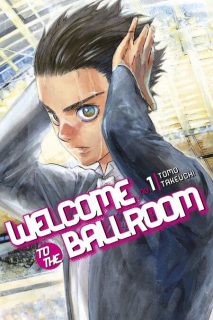 Welcome to the Ballroom, Volume 1 by Tomo Takeuchi. Even with the resurgence of sports manga in translation, I still wasn’t expecting that Welcome to the Ballroom would be licensed. Competitive ballroom dancing, despite being very physically demanding, probably isn’t what immediately comes to most people’s mind as a sport. In addition to that, in my experience many people are unfairly dismissive of dance and especially of men who dance. I, however, more than welcome a series on the topic. Welcome to the Ballroom is about a high school student, Tatara Fujita, who ultimately becomes interested in dance after finding refuge from a group of bullies at a local studio. At first he’s embarrassed and he hides the fact that he’s taking lessons, but at last he’s finally found something in his life to be passionate about. Unfortunately for him, he doesn’t seem to have any natural talent for dance except for the uncanny ability to shadow and mimic another dancer. The first volume of Welcome to the Ballroom didn’t engage me as much as I thought or hoped that it would and some of the characters’ casual sexism was bothersome, but I’m still curious to see where the series goes from here, in part because it ends with quite a cliffhanger.
Welcome to the Ballroom, Volume 1 by Tomo Takeuchi. Even with the resurgence of sports manga in translation, I still wasn’t expecting that Welcome to the Ballroom would be licensed. Competitive ballroom dancing, despite being very physically demanding, probably isn’t what immediately comes to most people’s mind as a sport. In addition to that, in my experience many people are unfairly dismissive of dance and especially of men who dance. I, however, more than welcome a series on the topic. Welcome to the Ballroom is about a high school student, Tatara Fujita, who ultimately becomes interested in dance after finding refuge from a group of bullies at a local studio. At first he’s embarrassed and he hides the fact that he’s taking lessons, but at last he’s finally found something in his life to be passionate about. Unfortunately for him, he doesn’t seem to have any natural talent for dance except for the uncanny ability to shadow and mimic another dancer. The first volume of Welcome to the Ballroom didn’t engage me as much as I thought or hoped that it would and some of the characters’ casual sexism was bothersome, but I’m still curious to see where the series goes from here, in part because it ends with quite a cliffhanger.

